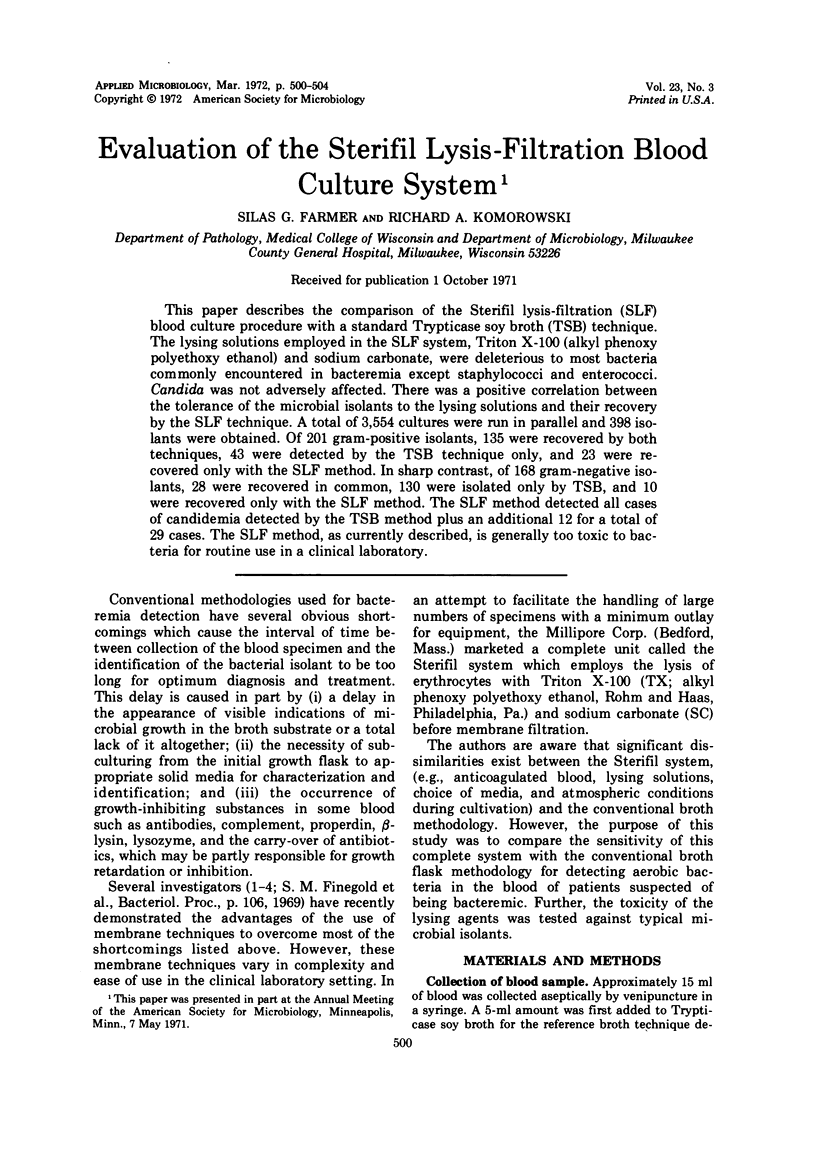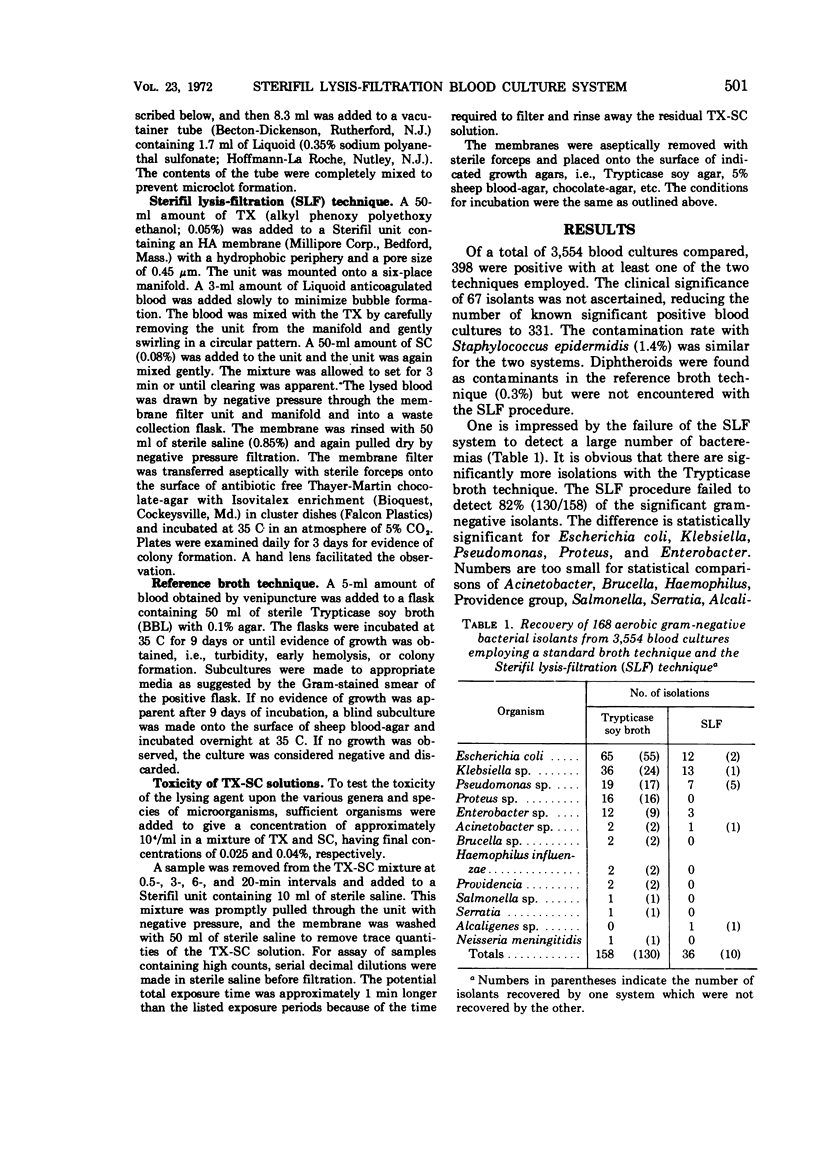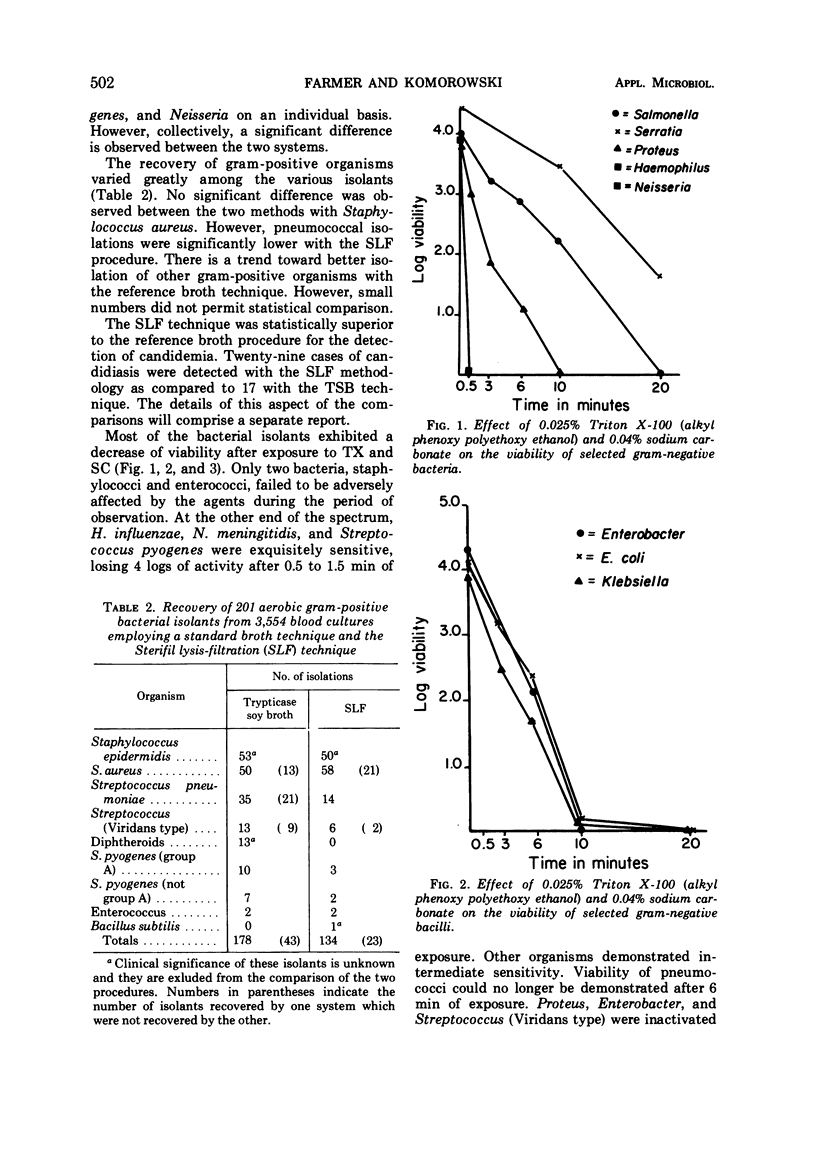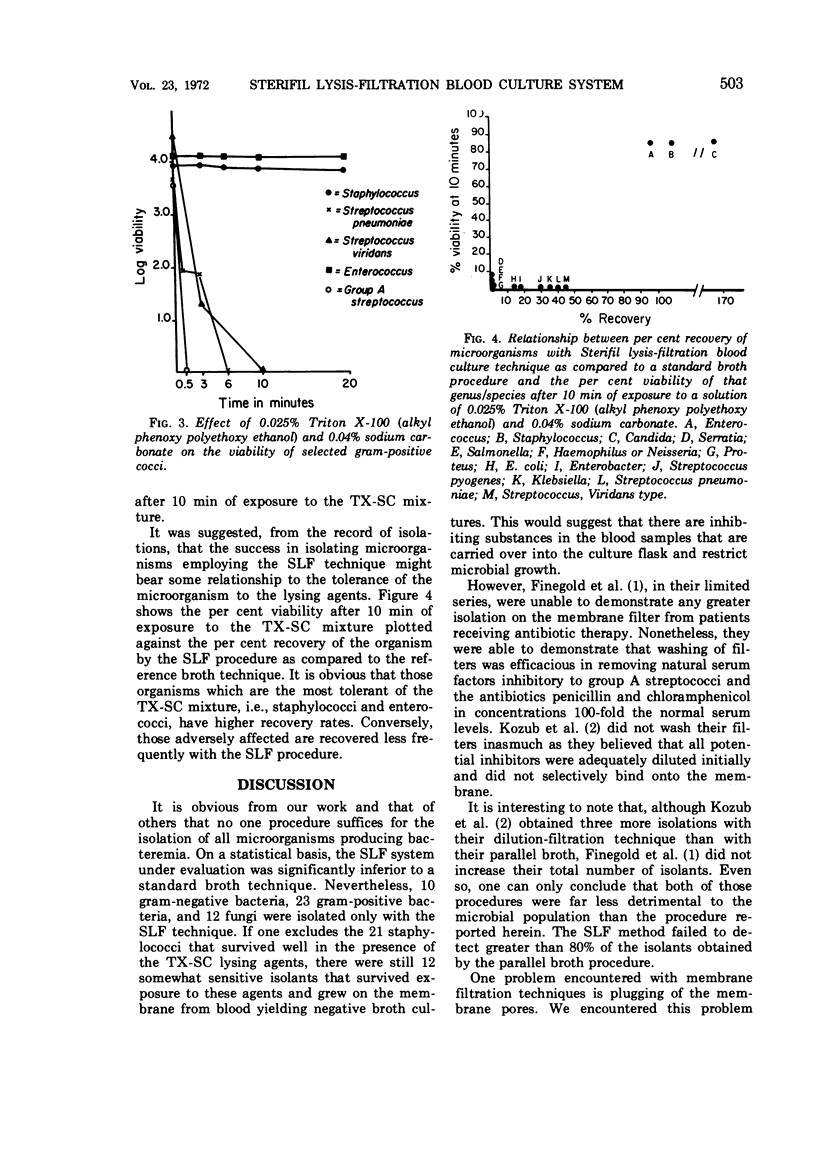Abstract
This paper describes the comparison of the Sterifil lysis-filtration (SLF) blood culture procedure with a standard Trypticase soy broth (TSB) technique. The lysing solutions employed in the SLF system, Triton X-100 (alkyl phenoxy polyethoxy ethanol) and sodium carbonate, were deleterious to most bacteria commonly encountered in bacteremia except staphylococci and enterococci. Candida was not adversely affected. There was a positive correlation between the tolerance of the microbial isolants to the lysing solutions and their recovery by the SLF technique. A total of 3,554 cultures were run in parallel and 398 isolants were obtained. Of 201 gram-positive isolants, 135 were recovered by both techniques, 43 were detected by the TSB technique only, and 23 were recovered only with the SLF method. In sharp contrast, of 168 gram-negative isolants, 28 were recovered in common, 130 were isolated only by TSB, and 10 were recovered only with the SLF method. The SLF method detected all cases of candidemia detected by the TSB method plus an additional 12 for a total of 29 cases. The SLF method, as currently described, is generally too toxic to bacteria for routine use in a clinical laboratory.
Full text
PDF




Selected References
These references are in PubMed. This may not be the complete list of references from this article.
- Finegold S. M., White M. L., Ziment I., Winn W. R. Rapid diagnosis of bacteremia. Appl Microbiol. 1969 Sep;18(3):458–463. doi: 10.1128/am.18.3.458-463.1969. [DOI] [PMC free article] [PubMed] [Google Scholar]
- TIDWELL W. L., GEE L. L. Use of membrane filter in blood cultures. Proc Soc Exp Biol Med. 1955 Apr;88(4):561–563. doi: 10.3181/00379727-88-21651. [DOI] [PubMed] [Google Scholar]
- Winn W. R., White M. L., Carter W. T., Miller A. B., Finegold S. M. Rapid diagnosis of bacteremia with quantitative differential-membrane filtration culture. JAMA. 1966 Aug 15;197(7):539–548. [PubMed] [Google Scholar]


